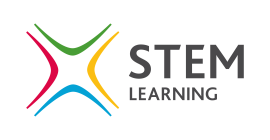- View more resources from this publisher
 National STEM Learning Centre and Network
National STEM Learning Centre and Network
Time lapse photography
Purpose: An important form of investigation that can be difficult to manage in classrooms is ‘observation over time’. Fixed length lessons reduce the number of possibilities for observation to those changes that occur within minutes rather than hours. One solution to this problem is to use time lapse photography to record changes and then analyse the speeded-up film rather than direct observations.
Teaching approach: One method of exploring plant responses to stimuli, is to use expensive specialist pieces of equipment such as auxanometers and kymographs. An alternative simpler, cheaper and more effective method is to use the built-in camera of a tablet device and an imaging app to record motion. Other applications of this technology include reaction speed or crystal growth in chemistry and motion in physics.
Preparation: Installing an app such as iMotion on iOS devices allows the user to specify a frame rate for the collection of images. Once image collection is complete, the frames are compiled into a video clip which can then be distributed to students for analysis. Students will need to know the frame rate if they need to calculate time intervals for the changes observed.
This video clip explains how to use time lapse to explore phototropism in seedlings.
Show health and safety information
Please be aware that resources have been published on the website in the form that they were originally supplied. This means that procedures reflect general practice and standards applicable at the time resources were produced and cannot be assumed to be acceptable today. Website users are fully responsible for ensuring that any activity, including practical work, which they carry out is in accordance with current regulations related to health and safety and that an appropriate risk assessment has been carried out.




